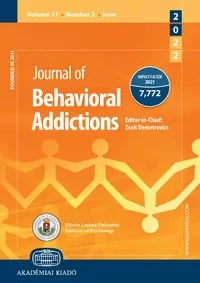Apples and oranges in the basket of a clinical model for exercise addiction: Rebuttal to Brevers et al. (2022)
Apples and oranges in the basket of a clinical model for exercise addiction: Rebuttal to Brevers et al. (2022)
Author(s): Attila Szabó, Jacob S. Dinardi, Alexei Y. EgorovSubject(s): Behaviorism
Published by: Akadémiai Kiadó
Keywords: addiction; dependence; exercise; physical activity; sport
Summary/Abstract: This note is a reply to Brevers et al.’s (2022) the commentary. We first explain that the commentary's title is in discord with the theoretical implications of the Expanded Interactional Model of Exercise Addiction (EIMEA; Dinardi et al., 2021). Subsequently, we argue that in contrast to Brevers et al.’s arguments, exercise volume or intensive physical exercise is not even mentioned in the revised EIMEA. Most importantly, we point out that the commentary's reference to assessment scales of exercise addiction is irrelevant, because the EIMEA is intended for idiographic clinical cases rather than nomothetic research. Furthermore, we discuss how the ELMEA cannot account for secondary exercise addiction and motivational incentives due to its individual-specific orientation. Finally, we conclude our reply by highlighting that Brevers et al.’s commentary seems to revolve around nomothetic research assessing a certain level of ‘risk’ of exercise addiction, while the EIMEA accounts for specific clinically dysfunctional cases presented in the limited number of case studies published in the literature.
Journal: Journal of Behavioral Addictions
- Issue Year: 11/2022
- Issue No: 2
- Page Range: 240-242
- Page Count: 3
- Language: English

